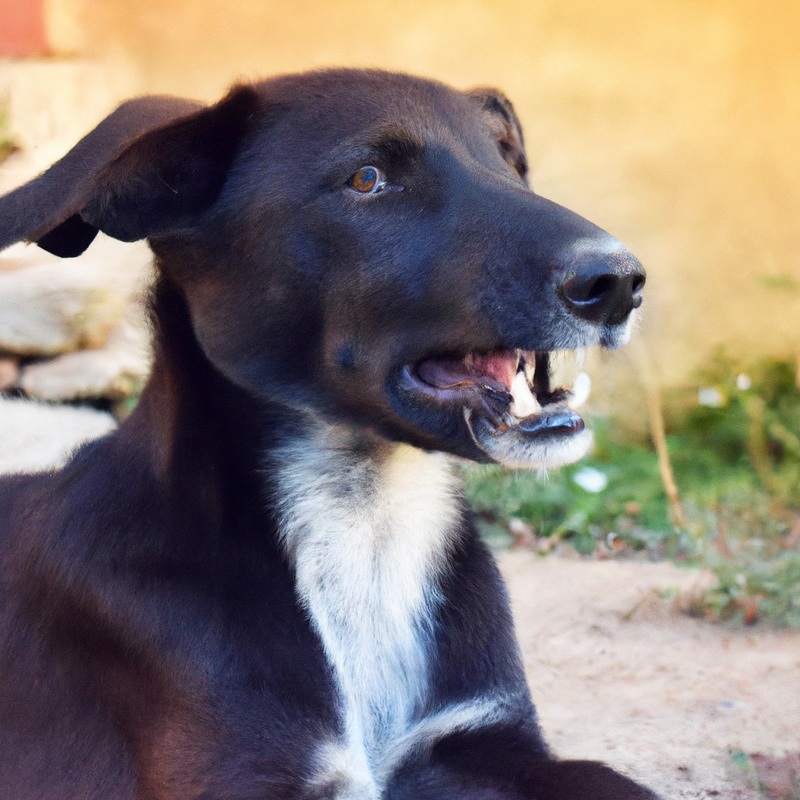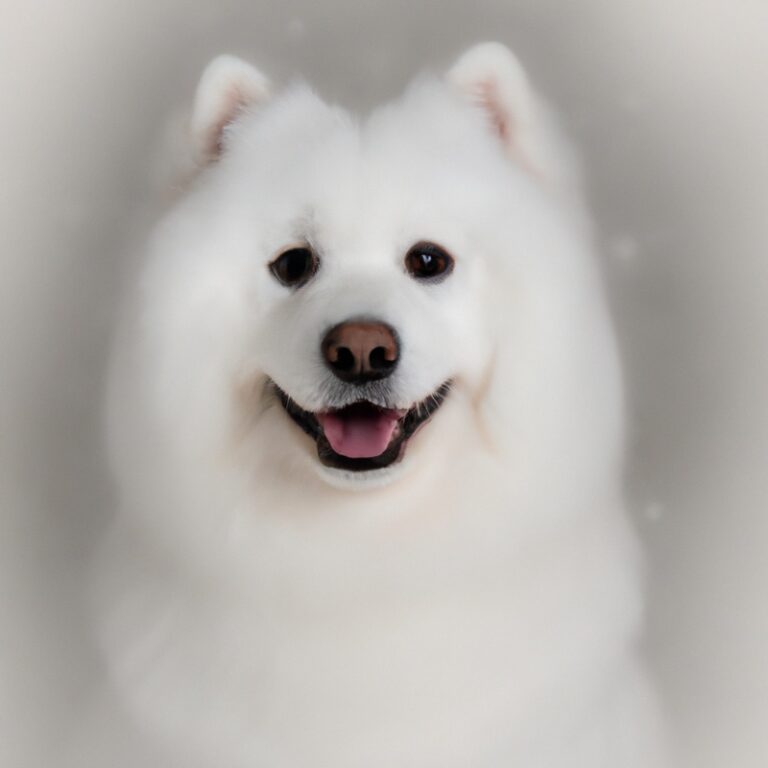How To Introduce a New Dog To a Samoyed?
Key Takeaways:
- You should introduce the new dog and the Samoyed on neutral territory.
- You should gradually increase the amount of time they spend together.
- You should closely monitor their interactions during the initial introduction.
- You should provide separate spaces for each dog to retreat to if needed.
Are you ready to introduce a new furry friend to your family, but worried about how your Samoyed will react?
You’re not alone! Introducing a new dog to a Samoyed can be a bit tricky, as these beautiful and sociable creatures have their own unique temperament.
Hi, I’m here to help you navigate this exciting journey.
In this article, we’ll dive into the world of Samoyeds, understanding their history, characteristics, and behavior traits.
We’ll also explore the essential preparations you need to make before bringing home a new dog, as well as the common challenges you may encounter and how to overcome them.
So, let’s get started and ensure a harmonious introduction for your Samoyed and their new companion!
| Steps | Recommended Actions |
| Gather information about the new dog | – Learn about its breed, temperament, and history – Know its vaccination and health records |
| Prepare the environment | – Create a safe and secure space for both dogs – Set up separate eating and resting areas – Remove any hazards or valuable items |
| Introduce scents | – Exchange bedding or toys between the dogs to familiarize their scents – Allow them to sniff each other’s belongings |
| Initial meeting | – Choose a neutral location for the first interaction – Keep both dogs on a leash and allow them to observe each other – Reward positive behavior with praise and treats |
| Supervised visits | – Gradually increase the duration and frequency of their interactions – Monitor their behavior closely for any signs of aggression or stress – Separate them if necessary to prevent any conflicts |
| Positive reinforcement | – Reward good behavior and calmness with treats and praise – Encourage interactions that show trust and respect – Maintain a calm and positive atmosphere |
| Gradual integration | – Allow supervised playtime and interactions in controlled environments – Keep the dogs separated when unsupervised until you are confident in their compatibility – Be patient and gradually increase the amount of time they spend together |
| Seek professional help if needed | – Consult a professional dog trainer or behaviorist if there are any persistent issues – They can provide specialized guidance and training techniques |
Understanding the Samoyed breed
Brief history and characteristics of Samoyeds
Samoyeds are an ancient breed originating from Siberia, where they served as working dogs for the nomadic Samoyed people.
They were bred for their ability to pull sleds, herd reindeer, and keep their owners warm in the harsh Arctic climate.
Samoyeds are known for their friendly and gentle nature, making them excellent family pets.
They have a thick double coat that requires regular grooming to maintain its beauty.
Samoyeds are also intelligent and highly trainable, but they do have a strong independent streak.
Overall, they are loyal, playful, and make wonderful companions for active individuals or families.

Temperament and behavior traits of Samoyeds
Samoyeds are known for their friendly and gentle nature. They are sociable dogs that love being a part of the family.
Samoyeds are generally good with children and enjoy playing with them.
They are also known for their intelligence and independence. However, they can sometimes be stubborn, so it’s important to establish yourself as the pack leader and provide consistent training.
Samoyeds are active and energetic dogs, so they require regular exercise and mental stimulation to prevent boredom and destructive behavior.
Overall, Samoyeds make wonderful companions for those who can meet their needs for socialization, training, and exercise.
Preparation for introducing a new dog
Assessing the existing dog’s temperament and behavior
Assessing the existing dog’s temperament and behavior is important before introducing a new dog to your Samoyed.
- Observe how your dog reacts to other dogs – Are they friendly, anxious, or aggressive?
- Consider their behavior with different people – Are they comfortable or hesitant?
- Look for signs of dominance or submission – Do they assert themselves or submit easily?
- Evaluate their response to new environments and situations – Are they adaptable or easily stressed?
- Assess their overall demeanor – Are they generally calm or easily excitable?
Understanding your dog’s temperament will help you make informed decisions and ensure a smooth introduction.

Preparing the home for the new arrival
Before bringing home a new dog, it’s essential to prepare your home for their arrival. Here are a few tips to get you started:
- Create a safe space: Set up a designated area where your new dog can feel safe and secure, such as a crate or a cozy corner with a bed.
- Remove potential hazards: Dog-proof your home by removing any toxic plants, securing loose wires, and keeping cleaning supplies and medications out of reach.
- Stock up on essentials: Make sure you have all the necessary supplies, including food, water bowls, toys, and a leash.
- Establish house rules: Decide on basic rules and boundaries, such as which areas are off-limits and where your dog will sleep.
- Introduce familiar scents: If possible, bring an item with the scent of your new dog’s previous environment or littermates to help them feel more at ease.
- Prepare for potty training: Set up a designated potty area in your yard or consider using pee pads for the initial period.
- Consider a gradual introduction: If you already have a resident dog, it may be best to introduce them in a neutral environment before bringing the new dog home.
Gathering necessary supplies and resources
To successfully introduce a new dog to your Samoyed, it’s important to gather the necessary supplies and resources. Here’s what you’ll need:
- Dog crate or kennel for each dog to have their own space.
- Leashes and collars for walking and training.
- Food and water bowls separate for each dog.
- Plenty of dog food suitable for both breeds.
- Dog toys and chews to keep them entertained.
- Baby gates or barriers to establish boundaries.
- A comfortable bed for each dog to sleep on.
- A veterinarian’s contact information for any health concerns.
Having these supplies ready will ensure a smooth and comfortable transition for both dogs.

Common challenges and solutions
Territory and resource guarding
Territory and resource guarding is a common issue when introducing a new dog to a Samoyed. Dogs can become possessive of their space or belongings, which can lead to aggression.
To address this, ensure that each dog has their own separate space and resources.
Gradually introduce them to each other’s areas, using positive reinforcement and rewarding calm behavior. Supervise their interactions closely and provide plenty of exercise and mental stimulation to reduce tension.
Seek professional help if the guarding behavior persists.
Dominance and hierarchy issues
Dominance and hierarchy can be sensitive issues when introducing a new dog to a Samoyed.
It’s important to establish clear boundaries and communication from the start.
Here are a few tips:
- Provide separate spaces: Give each dog their own designated areas to eat, sleep, and relax. This helps prevent any potential conflicts over resources.
- Supervised interaction: Gradually introduce the new dog to your Samoyed in controlled environments. Keep a close eye on their behavior and intervene if any signs of aggression or dominance appear.
- Equal attention: Make sure both dogs receive equal amounts of attention, affection, and exercise. This helps prevent jealousy or competition between them.
- Slow introductions: Take it slow and allow the dogs to get to know each other gradually. Start with short supervised interactions and increase the time as they become more comfortable with each other.
- Positive reinforcement: Reward good behavior in both dogs with treats, praise, and affection. This reinforces positive associations and helps build a harmonious relationship between them.
Remember, every dog is unique, and it may take time for them to adjust to each other.
Patience, consistency, and positive reinforcement are key when addressing dominance and hierarchy issues during the introduction of a new dog to a Samoyed.
Separation anxiety and jealousy
Separation anxiety and jealousy can be common challenges when introducing a new dog to a Samoyed. To address separation anxiety, slowly increase the amount of time the two dogs spend apart, gradually building up to longer periods.
Provide each dog with their own space and toys to help them feel secure.
Address jealousy by giving both dogs equal attention and affection, and establish a consistent routine to minimize any feelings of favoritism. Supervise their interactions initially, and provide positive reinforcement to encourage good behavior.
Frequently Asked Questions
Can any dog be introduced to a Samoyed?
Introducing any dog to a Samoyed can be a smooth process, but it requires some careful considerations.
Not every dog may be compatible with a Samoyed due to differences in personality, size, and energy levels.
It’s important to choose a dog that has a similar temperament and energy level as the Samoyed.
Slow and supervised introductions are crucial, ensuring that both dogs feel comfortable and safe.
With patience and proper introductions, many dogs can happily coexist with a Samoyed.
How long does it take for the dogs to get along?
The time it takes for dogs to get along varies depending on several factors, such as their individual personalities, past experiences, and the introduction process.
Some dogs may start to bond within a few days, while others may take weeks or even months.
It’s important to be patient and allow them to establish their own pace.
Gradual introductions, positive reinforcement, and supervised interactions can help foster a harmonious relationship between your dogs.
Remember, each dog is unique, so it’s essential to tailor the process to their specific needs.
What if the dogs don’t get along?
What if the dogs don’t get along?
It’s important to supervise their interactions and separate them if necessary.
Take it slow and give them time to adjust, allowing short and controlled interactions.
Keep a positive and calm atmosphere, and reward them for good behavior.
Gradually increase their time together while monitoring their body language.
Seek the help of a professional trainer or behaviorist if needed.
Remember, each dog is different, and it may take time for them to become friends.
How to handle aggression during the introduction process?
Handling aggression during the introduction process can be challenging. Here are some tips to help you navigate this situation:
- Create a calm and controlled environment: Ensure both dogs are in a neutral space and remove any potential triggers.
- Use positive reinforcement: Reward calm behavior and redirect any signs of aggression with treats or praise.
- Gradual introduction: Start by allowing the dogs to sniff each other through a barrier or on leash. Increase their exposure gradually over time.
- Seek professional help if needed: If aggression persists or escalates, consult a professional dog trainer or behaviorist for guidance.
- Patience and consistency: Remember that each dog is unique and it may take time for them to adjust. Stay calm and consistent in your approach to help foster a positive relationship between the dogs.
Final Verdict
Introducing a new dog to a Samoyed requires careful preparation, understanding, and patience. By assessing the existing dog’s temperament, preparing the home, gathering necessary supplies, and following a gradual introduction process, the chances of a successful integration are greatly improved.
It is important to address common challenges such as territory guarding, dominance issues, and separation anxiety with appropriate training and professional help if needed.
Remember, every dog is unique, and the timeline for them to get along can vary. If aggression arises, it is crucial to handle it calmly and seek professional guidance.
The key is to approach the introduction process with knowledge, empathy, and a commitment to fostering a harmonious relationship between your dogs.







